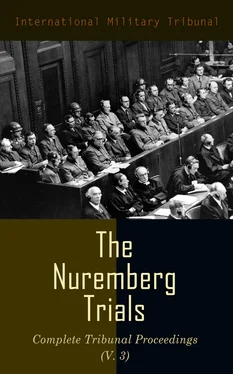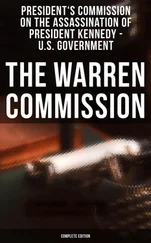“As for the rest, I have more than once expressed the desire and the hope of entering into similar good and cordial relations with our neighbors. Germany has, and here I repeat this solemnly, given the assurance time and time again that, for instance, between her and France there cannot be any humanly conceivable points of controversy. The German Government has further given the assurance to Belgium and Holland that it is prepared to recognize and to guarantee the inviolability and neutrality of these territories.”
After Hitler had remilitarized the Rhineland and had repudiated the Locarno Pact, England and France sought to re-establish the position of security for Belgium which Hitler’s action had threatened. And they, therefore, gave to Belgium on the 24th of April 1937 a specific guarantee that they would maintain, in respect of Belgium, the undertakings of assistance which they had entered into with her both under the Locarno Pact and under the Covenant of the League. On the 13th of October 1937 the German Government also made a declaration assuring Belgium of its intention to recognize the integrity of that country.
It is, perhaps, convenient to deal with the remaining assurances as we review the evidence which is available as to the preparations and intentions of the German Government prior to their actual invasion of Belgium on the 10th of May 1940.
As in the case of Poland, as in the case of Norway and Denmark, so also here the dates speak for themselves.
As early as August of 1938 steps were being taken to utilize the Low Countries as bases for decisive action in the West in the event of France and England opposing Germany in the aggressive plan which was on foot at that time against Czechoslovakia.
In an Air Force letter dated the 25th of August 1938 which deals with the action to be taken if England and France should interfere in the operation against Czechoslovakia, it is stated:
“It is not expected for the moment that other states will intervene against Germany. The Dutch and the Belgian area assumes in this connection much more importance for the conduct of war in Western Europe than during the World War, mainly as advance base for the air war.”
In the last paragraph of that order it is stated:
“Belgium and the Netherlands, when in German hands, represent an extraordinary advantage in the prosecution of the air war against Great Britain as well as against France . . .”
That was in August 1938. Eight months later, on the 28th of April 1939, Hitler is declaring again:
“I was pleased that a number of European states availed themselves of this declaration by the German Government to express and emphasize their desire to have absolute neutrality.”
A month later, on the 23rd of May 1939, Hitler held that conference in the Reich Chancellery, to which I already referred. The minutes of that meeting report Hitler as saying:
“The Dutch and Belgian air bases must be occupied by armed forces. Declarations of neutrality cannot be considered of any value. If England and France want a general conflict on the occasion of the war between Germany and Poland they will support Holland and Belgium in their neutrality . . . . Therefore, if England intends to intervene at the occasion of the Polish war, we must attack Holland with lightning speed. It is desirable to secure a defense line on Dutch soil up to the Zuider Zee.”
Even after that he was to give his solemn declarations that he would observe the neutrality of these countries. On the 26th of August 1939, when the crisis in regard to Danzig and Poland was reaching its climax, on the very day he had picked for the invasion of Poland, declarations assuring the governments concerned of the intention to respect their neutrality were handed by the German Ambassadors to the King of the Belgians, the Queen of the Netherlands, and to the Government of the Grand Duchy of Luxembourg in the most solemn form. But to the Army Hitler was saying:
“If Holland and Belgium are successfully occupied and held, a successful war against England will be secured.”
On the 1st of September Poland was invaded, and 2 days later England and France came into the war against Germany, in pursuance of the treaty obligations already referred to. On the 6th of October Hitler renewed his assurances of friendship to Belgium and Holland, but on the 9th of October, before any kind of accusation had been made by the German Government of breaches of neutrality, Hitler issued a directive for the conduct of the war. And he said this:
“1) If it becomes evident in the near future that England and France, acting under her leadership, are not disposed to end the war, I am determined to take firm and offensive action without letting much time elapse.
“2) A long waiting period results not only in the ending of Belgian and perhaps also of Dutch neutrality to the advantage of the Western Powers, but also strengthens the military power of our enemies to an increasing degree, causes confidence of the neutrals in final German victory to wane, and does not help to bring Italy to our aid as brothers-in-arms.
“3) I therefore issue the following orders for the further conduct of military operations:
“(a) Preparations should be made for offensive action on the northern flank of the Western Front crossing the area of Luxembourg, Belgium, and Holland. This attack must be carried out as soon and as forcefully as possible.
“(b) The object of this attack is to defeat as many strong sections of the French fighting army as possible, and her ally and partner in the fighting, and at the same time to acquire as great an area of Holland, Belgium, and northern France as possible, to use as a base offering good prospects for waging aerial and sea warfare against England and to provide ample coverage for the vital district of the Ruhr.”
Nothing could state more clearly or more definitely the object behind the invasion of these three countries than that document expresses it.
On the 15th of October 1939 the Defendant Keitel wrote a most-secret letter concerning “Fall Gelb” which was the name given to the operation against the Low Countries. In it he said that:
“The protection of the Ruhr area by moving aircraft reporting service and the air defense as far forward as possible in the area of Holland is significant for the whole conduct of the war. The more Dutch territory we occupy, the more effective can the defense of the Ruhr area be made. This point of view must determine the choice of objectives of the Army, even if the Army and Navy are not directly interested in such territorial gain. It must be the object of the Army’s preparations, therefore, to occupy, on receipt of a special order, the territory of Holland, in the first instance in the area of the Grebbe-Maas line. It will depend on the military and political attitude of the Dutch, as well as on the effectiveness of their flooding, whether objectives can and must be further extended.”
The Fall Gelb operation had apparently been planned to take place at the beginning of November 1939. We have in our possession a series of 17 letters, dated from 7th November until the 9th May postponing almost from day to day the D-Day of the operation, so that by the beginning of November all the major plans and preparations had in fact been made.
On the 10th of January 1940 a German airplane force-landed in Belgium. In it was found the remains of an operation order which the pilot had attempted to burn; setting out considerable details of the Belgian landing grounds that were to be captured by the Air Force. Many other documents have been found which illustrate the planning and preparation for this invasion in the latter half of 1939 and early 1940, but they carry the matter no further, and they show no more clearly than the evidence to which I have already referred, the plans and intention of the German Government and its Armed Forces.
Читать дальше












